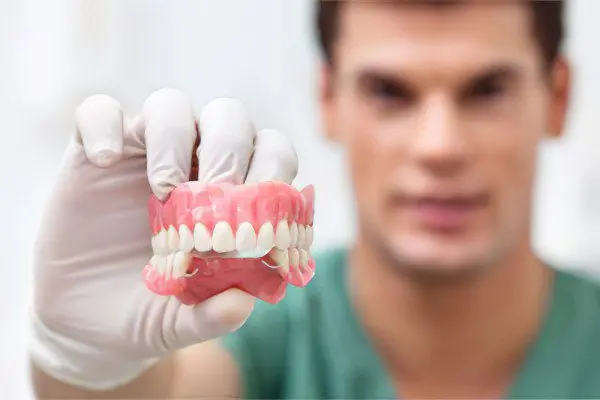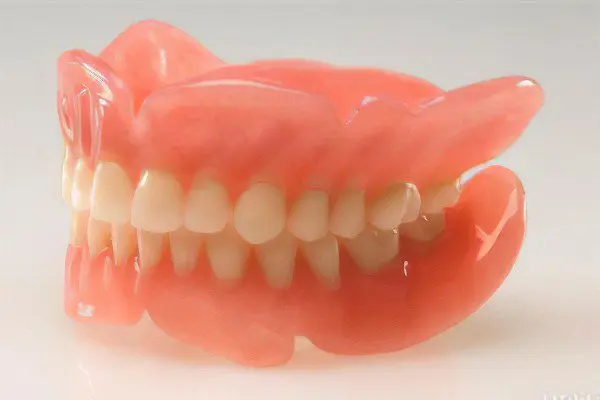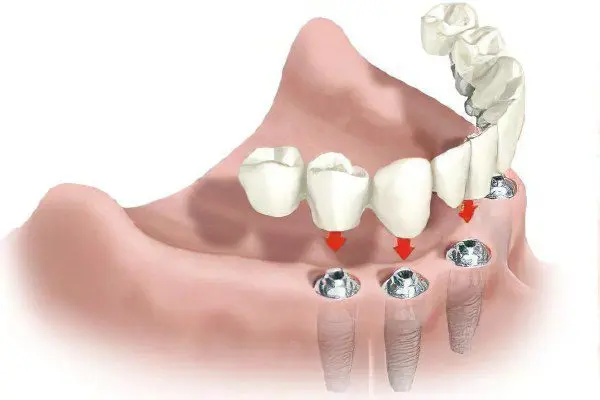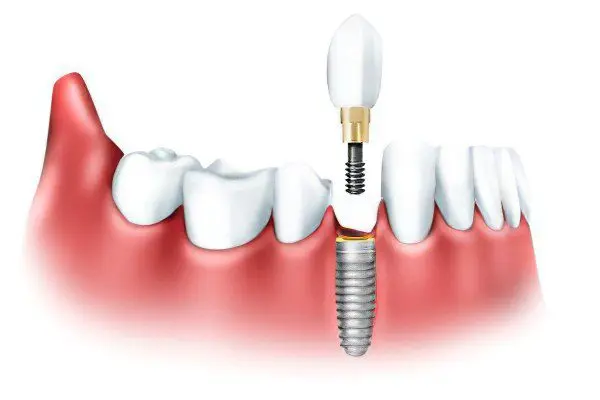Contents
Dental prosthetics – this is the process of their artificial recreation, when they were previously lost for any reason. Tooth loss can be caused by trauma, disease, and other factors. Therefore, the service of prosthetics is quite in demand in dental practice.
There are many ways to restore a lost tooth or teeth. To decide on a specific technology, the doctor must examine the condition of the bone tissue, the degree of neglect of the disease, assess the integrity of the dentition and the health of the gums. In addition, the financial side of the issue is no less significant when choosing a denture.
Necessary examinations before the start of prosthetics

Modern dental prosthetics is, first of all, a comprehensive examination of a patient who has applied to the clinic. For diagnostics, modern equipment should be used. The more thoroughly and fully the doctor performs the initial assessment of the condition of the teeth and oral cavity, the better the result will be for the patient in the long run.
Diagnosis before choosing a method of dental prosthetics must necessarily include:
Visual examination of the oral cavity, as well as the maxillofacial apparatus of the patient. An orthopedic dentist must assess the health of the teeth, the quality of their hygiene, the condition of the oral mucosa, the degree of neglect of existing diseases, etc. In addition, the doctor evaluates the functioning of the masticatory muscles, the condition of the temporomandibular joint and the patient’s posture;
Performing an x-ray. This will allow visualizing the state of the periodontium, as well as the alveolar processes located in the upper and lower jaws. X-ray examination also makes it possible to assess the length and direction of growth of the roots of interest to the doctor, the size of the tooth cavity, the condition of the canals and roots;
Assessment of masticatory muscle tone and their activity is performed using diagnostic methods such as electromyography and electromyotonometry;
Taking impressionson which the future project will be modeled. The study of the resulting model will allow you to work out the features of the bite, perform a preliminary turning, etc.
After the examination, the doctor discusses with the patient the possible types of prosthetics.
There are two main types of dentures: removable and non-removable structures. Each of these types, in turn, is divided into subspecies with certain disadvantages and advantages.
Removable dentures
Removable prosthetics are most often used when the patient has a shortage of several teeth: three or more. Moreover, missing teeth should go in a row, one after another. The main feature of a removable prosthesis lies in its name, that is, it must be periodically removed from the mouth for hygiene procedures.
Removable dentures can be of the following types:
clasp;
Plate made of acrylic plastic;
Nylon.
Clasp removable dentures
The phrase “clasp prosthetics” has German roots. “Bugel” in German means “arc”, it is its shape that repeats the prosthesis. This type of prosthetics can be used only if the patient has at least two of his teeth in his mouth, since it will be attached to them.
The materials that serve as the basis for the manufacture of a removable clasp prosthesis can be as follows: titanium, nylon, acetal, chromium-cobalt alloy, zirconium, metal-ceramic.
Such a prosthesis can be fixed using various devices:
Attachment – these are double fastenings, when one half of the micro-lock is located in the inner part of the prosthesis, and the second – in the metal-ceramic crown, which is put on the supporting tooth. The lock closes when putting on the prosthesis. At the same time, the prosthesis is securely fixed, the locks are not visible when smiling and while eating, and the service life of such prostheses varies from 5 to 7 years. However, clasp prostheses on attachments will cost more than their counterparts with other types of attachment. The fact is that attachments are imported from the USA and Germany, which causes their high cost;
Clasps These are hooks made of metal. They are a continuation of the arch of the prosthesis itself and are fixed directly at the base of the teeth that serve as a support. The undoubted advantages of such prostheses are their low cost and preservation of the integrity of tooth enamel. However, such structures also have their drawbacks. First of all, this concerns the aesthetic side, since often the clasp can only be installed on the front surface of the supporting tooth. In this case, it falls into the line of a smile and will be noticeable when teeth are exposed;
Telescopic crowns. This type of clasp prosthetics is the most expensive. The prosthesis is made by a high-level orthopedic dentist, has maximum aesthetics. Crowns of this type are fixedly fixed on the patient’s own teeth with the lower part, and a prosthesis is put on them. It fits with high precision and falls directly into the recesses in the crowns. When alignment is achieved, all that remains is to snap the locks, which allows you to securely fix the structure;
Splinting clasp prostheses used in the absence of a supporting tooth on one side of the jaw, with periodontal disease, with displacement of teeth in the conditions of the dentition, with exposure of the roots of the teeth. The design will be made in an arcuate shape, and the clasps will fix each tooth separately. The advantages of the splinting type of fastening are that the gums and mucous membrane of the oral cavity will be protected from mechanical damage during chewing food, the teeth will not loosen. The disadvantages of such prostheses is that they are quite difficult to manufacture, and this will certainly affect the price;
Clasp prostheses with fixation on implants applicable in the case when the patient has no terminal teeth. Instead of missing teeth, in the presence of a jaw bone of the required thickness, implants are inserted into a person. They subsequently act as a support for the clasp prosthesis.
The undoubted advantages of clasp prostheses are:
Low cost;
Reliable fixation in the mouth;
Possibility of installation in the presence of mobile teeth;
Structural strength;
No need to remove the prosthesis during the night’s rest;
Ease of care;
Long service life with proper use.
However, clasp removable processes have the following disadvantages:
This type of prosthesis cannot be installed if there are no healthy teeth in the oral cavity, going in a row one after another;
Often these prostheses require a long time to get used to them, sometimes the adaptation period is delayed up to several weeks;
The gums can be rubbed with the fasteners of the prosthesis.
Indications for the use of clasp prostheses are:
Replacement of one or more teeth;
The presence of a defect in the dentition;
The presence of an end defect;
The need to correct the curvature of the dentition;
Therapy of periodontitis with the use of splinting technology.
Contraindications to clasp prosthetics are:
Absence of teeth acting as a support;
Diabetes mellitus, oncological diseases;
Acute stage of diseases of the cardiovascular system;
mental disorders;
Inflammatory processes in the oral cavity in the acute stage;
Diseases of the respiratory system in the acute stage.
Acrylic dentures

Acrylic dentures are traditional removable dentures.
They can be divided into several types:
Complete removable. This type of prosthesis is installed if the patient has no teeth at all. Instead of an abutment tooth, the alveolar process of the lower jaw is used. On the upper jaw, the prosthesis is additionally fixed behind the palate. At the same time, the fixation of such a prosthesis is not entirely reliable, since a person has no teeth.
Acrylic partial dentures can be applied when the patient has at least one healthy tooth. Naturally, he will act as a support.
Conditionally removable or cover prostheses with fixation on implants. These prostheses will be held by mini-implants previously implanted in the patient’s jaw. Their number is calculated in each case individually.
Naturally, acrylic prostheses have both their advantages and disadvantages. Among the advantages can be identified:
Lightweight prosthesis;
Variety of shades;
No need for pre-turning;
Easy to operate;
Ease of implementation of hygiene measures;
Low cost;
Ease of repair;
The maximum service life is up to 5 years.
The disadvantages of acrylic dentures include:
Fragility of the prosthesis;
Long time of adaptation of the patient to the prosthesis;
The possibility of developing an allergic reaction to the components of the prosthesis;
Change in diction;
Decreased sensitivity;
The presence of a porous structure, which is a favorable environment for the reproduction of bacteria;
The likelihood of injury to the soft tissues of the oral cavity, the risk increases in parallel with the number of missing teeth;
Destruction of abutment teeth over time.
Indications for the use of an acrylic prosthesis:
Adentia partial and complete;
Correction of bite in childhood with untimely loss of milk teeth;
Temporary replacement of the dentition during prosthetics with fixed structures.
Contraindications to the use of an acrylic prosthesis:
The presence of an allergic reaction to the components of the prosthesis;
Severe resorption of the jawbone, leading to flattening of the alveolar part (the prosthesis simply will not hold);
Pronounced gag reflex in the patient.
Nylon dentures
About 20 years ago, nylon dentures replaced plastic dentures, which were used as replacement teeth for people with complete absence of them.
Dental nylon allows you to quite accurately simulate the gums, since the material itself is soft, elastic, translucent. This makes it much more comfortable to use compared to rigid plastic prostheses.
Dental crowns, which are attached to a nylon prosthesis, are made of either ceramic or zirconia.
The dentist will fix the finished prosthesis in one of the following ways, which depends on the condition of the patient’s oral cavity:
If your own row of teeth is completely missing, then the prosthesis will be attached to the gum. Reliability of fixation is ensured by the suction effect after applying a special gel to the prosthesis;
If the prosthesis replaces only part of the teeth, then the nylon structure is equipped with several hooks of the same material. They are attached to the supporting teeth, directly near their base. At the same time, the abutment teeth do not need such a painful procedure as turning.
The undoubted advantage of nylon prostheses is that getting used to them comes after a week of regular wearing. The material has hypoallergenic properties, does not stain over time and does not require complex manipulations in the care. If the rules for operating the product are not violated, then such a prosthesis can last up to 8 years.
High aesthetic characteristics of the prosthesis are ensured by the fact that the clasps are gum-colored and are almost invisible on the teeth. Therefore, nylon prostheses are often referred to as invisible prostheses.
However, it is worth noting separately the disadvantages of dentures made of nylon, including:
Injury to the gums located in the region of the extreme teeth. Since the clasps will not be made of metal, but of nylon, they are not able to fully transfer the pressure that is exerted during chewing on the base tooth. Therefore, pressure falls on the mucous membrane of the prosthesis bed. This will lead to the destruction of the bone tissue that is under it, and the height of the gum will decrease. As a result, the prosthesis will sag exactly in this place, and its clasps will cut into the mucous membrane of the remaining teeth. As a result – the development of the inflammatory process, the appearance of pain;
The larger the prosthesis, the stronger will be its elastic deformation during chewing. That is, due to the softness of the nylon prosthesis, the load will be distributed only on the side of the jaw that the person chews. As a result, the bone tissue will atrophy faster on this side, and the process of chewing and biting food will begin to cause discomfort, causing pain. However, if a nylon prosthesis replaces only 2 teeth, then the patient will not feel such a disadvantage;
Accelerated subsidence of the prosthesis as a result of atrophy of the bone tissue under it;
Difficulty in polishing the prosthesis. Inside the prosthesis is not polished at all, which is inherent in the technology itself. As a result, if it is not subjected to thorough hygiene, microbial plaque will accumulate under it and dental deposits will appear. This, in turn, will provoke the appearance of an unpleasant odor from the prosthesis and it will be impossible to insert it into the mouth;
High manufacturing cost;
Multiple correction due to sagging gums.
Indications for the use of nylon prostheses:
Absence of 1-2 teeth in the event that the patient does not want to grind the base tooth;
Partial or complete absence of teeth;
Allergic reactions to the components that make up acrylic prostheses;
Prosthetic stomatitis.
Contraindications to the use of nylon prostheses:
Periodontitis, periodontitis;
Insufficient height of existing teeth;
Mobility of the mucosa covering the gums;
Gingival atrophy over 20%.
Fixed dentures

Fixed dentures can be fixed either on a tooth that is located nearby, or on an artificial tooth root – on an implant.
Fixed dentures can be of the following types:
Dental crowns, which are a cap on a tooth, completely imitating its shape. Dental crowns can also be worn over prosthetic teeth that are fixed on artificial roots;
Bridge prostheses are a set of dental crowns that are put on the patient’s own teeth or on the roots of the teeth;
Implants are tooth roots made of titanium or zirconium. They are installed in order to subsequently put a crown or bridge on them;
Inlays, veneers, lumineers are non-removable structures, the main purpose of which is to improve the appearance of a tooth or dentition.
dental crowns
A dental crown is a prosthesis of a tooth made according to its anatomical shape with fixation on a tooth-stump.
They can be made from the following materials:
Crowns made of metal. They are made from various alloys, as well as from precious metals. All-metal crowns can be installed if there is a need to restore molars.
Distinguish:
Solid metal crowns, the basis for them is an alloy of chromium and cobalt, sometimes such crowns are coated with gold plating, the main disadvantage is considered to be low aesthetic characteristics;
Stamped crowns, are made from a sleeve, which is shaped into a tooth with a hammer. They have a lot of shortcomings, lead to various diseases of the oral cavity (practically not used in modern dentistry);
golden crowns, very expensive, only state clinics can install them.
Crowns made of metal-ceramic. They are strong enough, look aesthetically pleasing, which makes it possible to install them on the front teeth. However, to install such a crown, you will need to sharpen the tooth and remove the nerve from it. The service life of such a crown can reach 10 years;
All-ceramic crowns, made from ceramic mass, the base for which is either porcelain or zirconium dioxide. Porcelain crowns have a high aesthetic appeal, but they are very expensive and can only be made singly. Zirconia-based crowns are also very similar to natural teeth, but in addition to that they are strong and durable. The only drawback of such a crown is its high price;
Metal composite crowns are an alloy of chromium and cobalt, the front part is covered with plastic. They have excellent aesthetic qualities and are inexpensive. Among the shortcomings, one can single out the fragility of the structure, the possibility of developing allergic reactions, the rapid loss of the original color and the appearance of bad breath due to the high absorbency of the liquid;
Metal-plastic crowns one of the undoubted advantages is their low cost, however, the service life of such a crown will not exceed 5 years. The fact is that a layer of plastic is applied to a metal frame and after a short time it changes its original color. Another common disadvantage of such crowns is the rapid delamination of the plastic.
Bridge prostheses
A dental bridge is a structure that is fixed with abutments on natural or implanted foundations. Bridge sizes vary depending on how many missing teeth need to be replaced.
According to the method of fixation, it is customary to distinguish bridge prostheses:
With fastening on healthy adjacent teeth (their preliminary turning is required);
With fastening on implants (without preliminary turning);
With fastening on special plates – adhesive bridges (turning is not needed, but the service life of such prostheses does not exceed 5 years);
Lockable when a tooth or implant support is not required.
Depending on what material is used to make the bridge, there are:
Metal-ceramic bridge prostheses. Their base consists of metal, which is covered with ceramics on top. The service life of such products is up to 7 years;
Metal-plastic bridges with a base made of metal, which is covered with plastic on top. The service life of such products is usually limited to three years;
Bridges with a combined composition. Such structures can be made of zirconium oxide, aluminum. These are the most modern prostheses that serve for a long time, up to 15 years, and are of high quality materials.
The main advantage of installing a bridge prosthesis is the ability to make up for the lack of several teeth at once. In addition, high-quality bridge prostheses will serve for a long period of time, subject to all medical recommendations and care rules. Other advantages and disadvantages will depend on the type of material from which the prosthesis is made. The pros and cons of metal-plastic, metal-ceramic and other types of bridge prostheses are similar to the pros and cons of dental crowns made of the same materials.
If we consider the disadvantages of bridge prostheses in general, they will be as follows:
Turning of own teeth used as a support. This is required by the installation of any bridge, except for adhesive. He, in turn, is not so reliable fastening;
The need to have your own healthy teeth, or to install an implant;
The development of the mobility of those teeth that act as a support. This is due to the excessive load on them;
Possible atrophy of the part of the jaw that is under the bridge.
Dental implantation

Dental implantation is the installation of a pin, which will act as the root of the tooth, and then put on top of it and fix the crown. As a result, a person will acquire a durable new artificial tooth. In 99% of cases, it takes root perfectly and does not cause any undesirable health effects. The materials from which dental implants are made are metals (chromium alloy, titanium, stainless steel) and ceramics.
The implant itself resembles the root of a natural human tooth in shape (more about implants). It is screwed into the jaw, and after engraftment, an intermediate part (abutment) is installed, on top of which a crown of the selected material is fixed.
The positive points in the installation of the implant are:
Elimination of the defect without harm to the health of the teeth located in the neighborhood;
High aesthetic properties;
Long service life (up to 15 years or more);
Stopping the process of resorption of bone tissue due to the absence of a tooth.
The disadvantages of the implantation procedure are:
Long implant healing time, which can be up to six months;
The development of complications in the form of tissue edema, pain, development of bleeding, rejection of a foreign body;
A large number of contraindications.
Indications for implantation are:
Loss of one or more teeth;
End defects of the dentition;
Absence of teeth (complete adentia);
Intolerance to removable dentures due to a pronounced gag reflex or in the presence of individual hypersensitivity to plastics.
Absolute contraindications to the installation of implants:
Psycho-emotional disorders (depression, hypochondria, psychopathy, psychoses);
Seropositive infections (syphilis, tuberculosis, etc.);
Systemic diseases of the blood, bone and connective tissue;
Endocrine pathologies;
Diseases of the heart and blood vessels of a chronic course;
Oncological processes of a malignant nature.
Diseases of the oral mucosa.
Inlays, veneers, lumineers
A separate type of prosthetics is microprosthetics of teeth, for which methods such as the installation of inlays, veneers and lumineers are used. These products are non-removable prostheses and can last for a long time, sometimes up to 10 years. None of the micro-prostheses can replace a lost tooth, they are aimed at restoring it, eliminating the defect and improving aesthetic qualities.
So, dental inlays are micro-prostheses that can be either restorative (restore the color and shape of the tooth) or stump (restore the crown part of the tooth).
They are:
Made of metal (used on chewing teeth) and they are not visible when talking or smiling;
All-ceramic zirconia or pressed ceramic;
Metal-ceramic;
Composite.
The service life of such tabs can reach 10 years, which is their undoubted advantage. In addition, tabs are often used when a tooth is chipped.
Veneers are the thinnest plates that are attached to the front of the teeth located in the smile zone. These onlays can be made from composite, porcelain or zirconia. They are designed to hide a huge number of aesthetic violations: chips, enamel discoloration, gaps between teeth, scratches, curvature. It is the attractive appearance of the teeth after the installation of veneers on them that is their main advantage.
The disadvantages of veneers are as follows:
The fragility of the structure;
Preliminary grinding of the anterior teeth, as a result of which they will never be the same as before;
The need to wear veneers throughout life, or to replace your own teeth with prostheses.
Lumineers are a type of veneers, but their distinctive feature is their increased strength. Lumineers last longer than veneers and can last up to 20 years. Depending on the desire of the patient, lumineers can be fixed without prior turning. The disadvantage of these dentures is their high cost.
What type of prosthesis is best for dental prosthetics?
Choosing the best prosthesis will depend on a number of factors. First of all, this is the fulfillment of the main function of the prosthesis – chewing. In addition, it must have aesthetic appeal. The issue of price is also important for most patients.
The choice of the type of prosthesis depends on the number of missing teeth, on the condition of the patient’s oral cavity, etc. Therefore, it is possible to decide which type of prosthesis is better for prosthetics only in the dentist’s office.
Prosthetics in the absence of a large number of teeth
Dental prosthetics in this case can be of the following types:
Installation of crowns;
Installation of bridges;
Installation of a clasp prosthesis;
Installation of implants;
Installation of lamellar prostheses in the case when the teeth are completely missing.
Author of the article: Muravitsky Boris Viktorovich, dentist, specially for the site ayzdorov.ru









